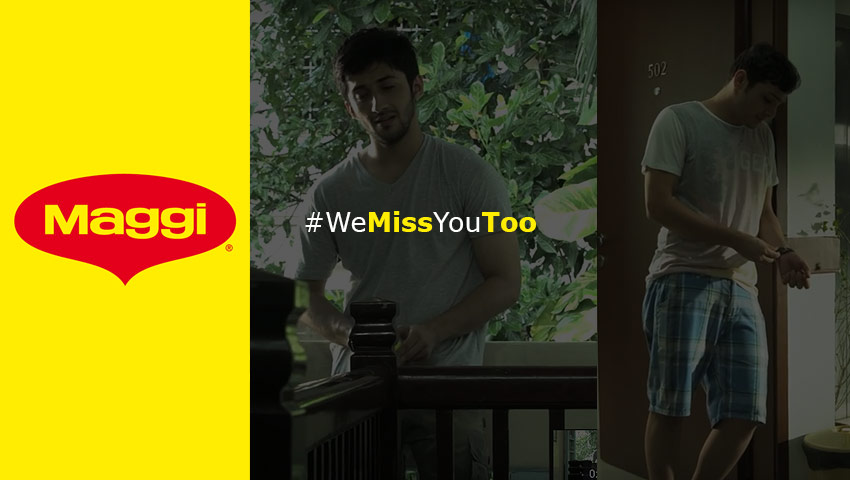How Maggi Turned Crisis Into Comeback — And Won Hearts Again
In 2015, Maggi, one of India's most beloved food brands, found itself at the center of a major crisis. Regulatory authorities claimed that the noodles contained excessive levels of lead and MSG, leading to a nationwide ban. What followed was not just a product recall but a significant breakdown in consumer trust — a nightmare for any brand. Sales plummeted, shelves were cleared, and for the first time in over three decades, Maggi was out of Indian kitchens.
But what makes Maggi's story remarkable isn't the crisis — it's the comeback. Nestlé India didn't just bring the product back; it rebuilt the brand emotionally, strategically, and transparently. Here's how Maggi turned the tide and re-entered millions of Indian homes and hearts.

Adarsh Gupta
Founder & CEO
Updated on: July 27,2025
12 mins read
About Maggi

Maggi, once a humble instant noodle brand, has become a household name and a cultural phenomenon in India. From being the ultimate 2-minute snack to the star of emotional advertising and comeback marketing, Maggi's journey is a masterclass in brand resilience, emotional storytelling, and consumer connection.
Its legendary comeback after the 2015 ban wasn't just about winning market share — it was about winning back hearts. Powered by nostalgia, trust, and powerful marketing, Maggi redefined what it means to be more than a product — it became a memory.
This case study explores how Maggi combined emotions, innovation, and trust to become one of India’s most iconic brands.
Julius Maggi
Founder
1884
Founded
90+
Countries
100%
Brand recall in urban India
30+
Product variants
Free 3 Day's Master Class
- Day 1 Kickoff + Industry Secrets
- Day 2 Digital Tools & Basics
- Career Launch Blueprint

Rebuilding Trust with Transparency
The first step toward redemption was regaining public trust. Nestlé responded swiftly with scientific clarity — conducting over 3,500 tests across India and abroad to prove the safety of the product. They published test reports, involved independent labs, and remained in constant communication with the authorities and the public. The company made it clear: “Maggi is safe”, and they had the data to prove it.
Emotional Marketing That Connected Deeply
Rather than pushing aggressive product promotions, Maggi took the emotional route. Their comeback campaign, #WeMissYouToo, focused on the pain of separation — not from a product, but from a memory. The TV and digital ads showed relatable situations: college students in hostels, moms preparing snacks, friends during midnight cravings — all reminiscing about the absence of Maggi in their lives.
This storytelling approach was powerful. It didn’t try to sell. It simply acknowledged what people already felt: Maggi is not just food — it’s emotion. The brand leaned heavily on nostalgia and authenticity, reestablishing emotional bonds with its audience.

A Strategic 360° Media Push
Maggi’s return was amplified through a well-planned 360° media strategy. Traditional media like TV and newspapers communicated the product's safety and comeback. Meanwhile, digital platforms were used to spread user-generated content, stories, and creative videos from influencers and food bloggers.
It launched a YouTube series showing real people talking about their "Maggi moments", and micro-influencers were encouraged to share Maggi comeback recipes. Popular hashtags like #MaggiIsBack and #WeMissYouToo flooded social media, making the campaign go viral organically.
Relaunch Strategy Focused on Confidence
Maggi didn’t immediately go for a nationwide relaunch. Instead, it adopted a staggered rollout strategy — starting in 100 cities to manage demand, gather feedback, and build buzz. The packaging was also updated with statements about lab testing and safety to reinforce transparency. In-store promotions, sampling booths, and point-of-sale displays were strategically placed to attract both loyal and skeptical consumers.
Key Moves That Powered Maggi’s Comeback
- Influencer Collaborations: Food bloggers and YouTubers created Maggi recipes, did taste tests, and vouched for the new version.
- New Product Variants: Maggi introduced Atta noodles, Oats Maggi, and later, Masala-ae-Magic spice mix to diversify the brand.
- Community Engagement: Campaigns encouraged people to share their own Maggi memories, creating user-generated buzz.
Results: A Historic Comeback
Despite the scale of the crisis, Maggi reclaimed 50% of its lost market share within just five months of relaunch. Within a year, it had bounced back to 60%+ market share, proving the strength of its brand equity. What worked was not just good marketing but honest communication, emotional connection, and cultural relevance.
Maggi’s comeback became a textbook example of crisis management done right. It showed how a brand can rise again — not just by selling products, but by winning hearts, staying authentic, and listening to its consume

